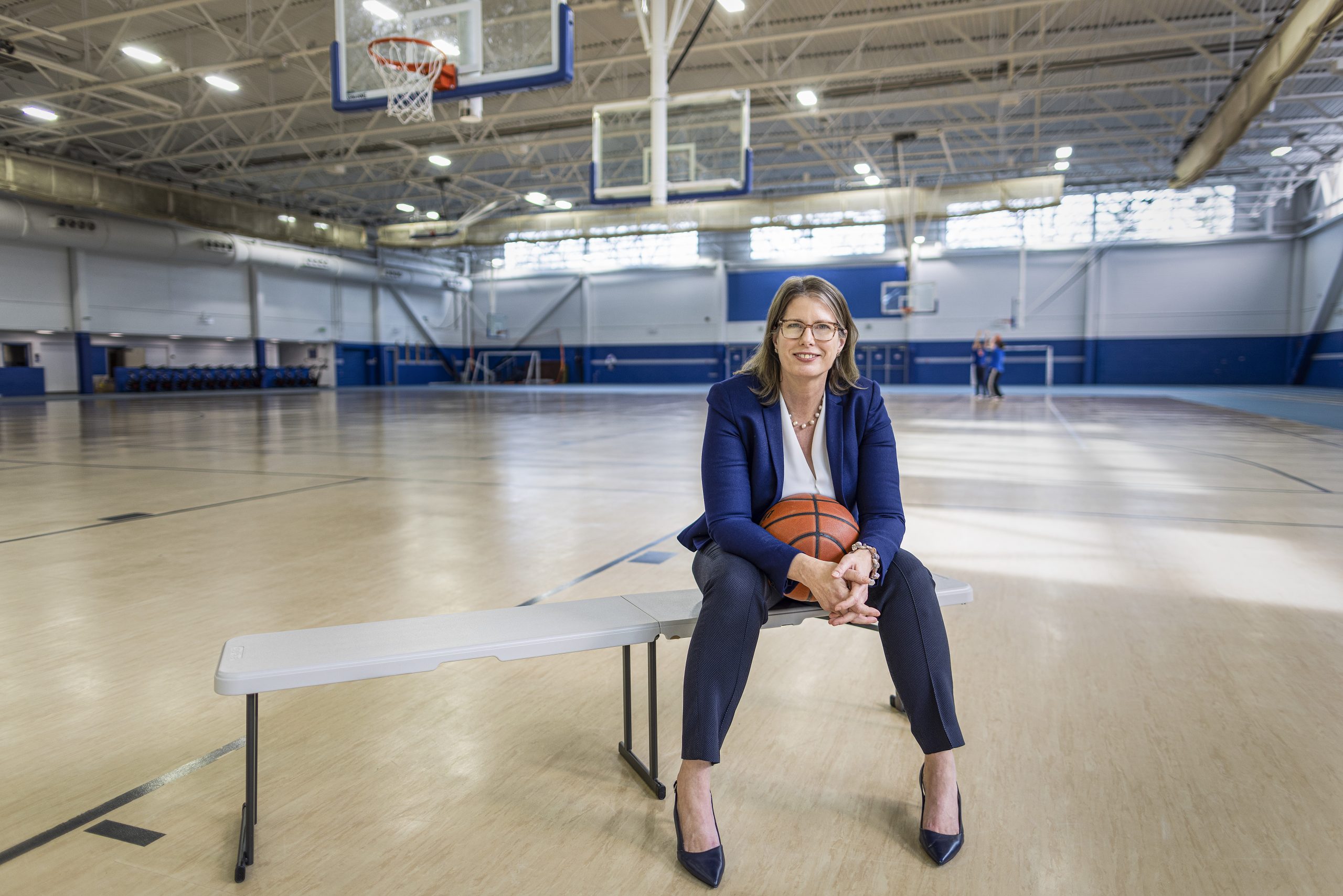By Jen A. Miller
Jane McManus has watched sports — and sports journalism — change. From her first job at the New York Daily News to now teaching the next generation of professionals (while writing a sports column at Deadspin), she knows that students are graduating into a different media landscape and could use guidance preparing for it.
Which is what brought her to Seton Hall — that and Bob Ley ‘76, legendary sportscaster and now executive founder of the Seton Hall Center for Sports Media.
“When Bob Ley calls and says ‘we’re starting a new center for sports media, do you want to throw in your hat?’ — you throw in your hat,” she said.
McManus met Ley when she was a student at Columbia University School of Journalism — he came to her class to talk about investigative and enterprise sports reporting. After working at the New York Daily News and Newsday, she eventually joined Ley at ESPN, where she covered the National Football League and was a columnist for espnW, with regular appearances on SportsCenter, the Sports Reporters and Outside the Lines.
She got that call from Ley while at Marist College, where she was director for sports communication, and started at Seton Hall in May 2022. In addition to Ley, the University’s long history of developing sports media talent — including Ed Lucas, Megan Olivi, Bob Picozzi, Bill Raftery, Dick Vitale and Bardia Shah-Rais — was a draw. As was the student population, and how many Seton Hall students are the first in their families to go to college.
“It’s really important to me to help young people coming into the business who haven’t traditionally had
a pathway into sports journalism,” she said.
She’s now working to develop a multi-year strategic plan for the Center for Sports Media to cement its place in journalism programs as a hub of interdisciplinary academic training and theory with practical and experiential learning.
This is especially needed right now, McManus said, because of how journalism is changing. Gone are the days when students could graduate into an entry position at one publication and stay there for the rest of their career. Most are going to change jobs, write for multiple outlets at once, and won’t necessarily have the same kind of mentoring and guiding hand to steer them, she said.
“You are responsible for making sure that you’re getting stuff right and that you’re doing things in an ethical way, and that you’re dealing with people fairly and responsibly,” she said. “Students need a bigger toolbox because they are going to be more responsible for their own careers out of the gate.”
In addition to giving students those tools, she is bringing in professionals from different backgrounds and making these opportunities open to all Seton Hall students. In February, McManus moderated an event with tennis legend and pioneer Billie Jean King and Ilana Kloss, King’s partner and CEO of Billie Jean King Enterprises. They spoke about gender equity in sports and economic opportunities for athletes.
McManus continues to introduce students to how sports intersect with the world, and she’s working with Seton Hall’s Institute for Communication and Religion to organize a sports and inclusion panel, an idea drawn from attending the international summit on sport at the Vatican last fall.
“We’re figuring out how to have conversations that touch on a number of different issues that are interesting and appealing to students,” she said.
That also means bringing athletes and journalists from all levels and experiences into the classroom. That might mean a Yankees beat writer or an MLB.com hiring coordinator one week, and a former volleyball player turned Harvard Medical School graduate the next. She wants to make sure students understand that there are stories everywhere and “it’s not just about the highest level of professional sports,” she said.
“I’m looking for ways to connect our students with opportunities inside and outside the classroom, but also making sure they’re aware of and have access to these opportunities and they understand the way that sports and these topics intersect.”
Jen A. Miller is the author of Running: A Love Story.







